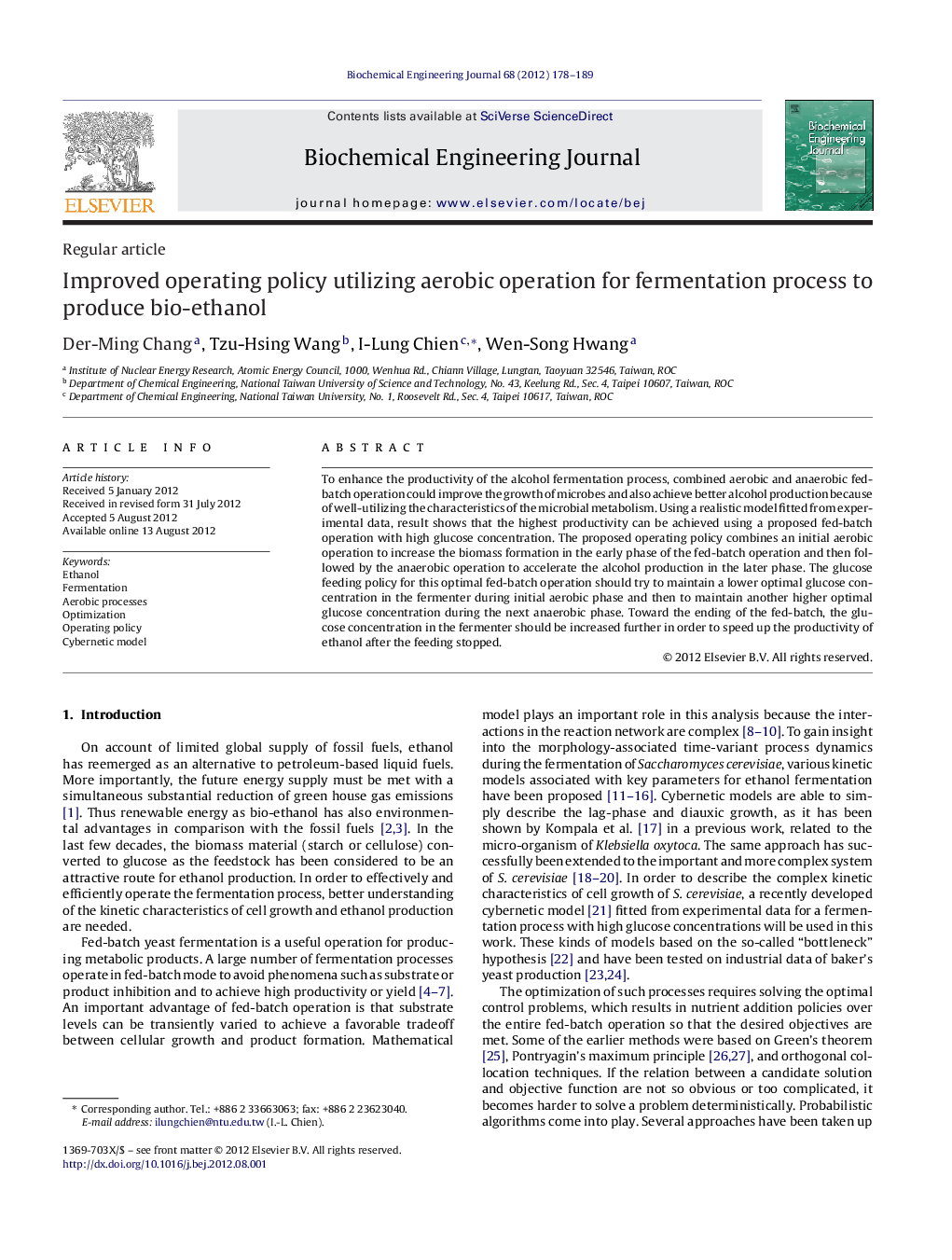| Article ID | Journal | Published Year | Pages | File Type |
|---|---|---|---|---|
| 3487 | Biochemical Engineering Journal | 2012 | 12 Pages |
To enhance the productivity of the alcohol fermentation process, combined aerobic and anaerobic fed-batch operation could improve the growth of microbes and also achieve better alcohol production because of well-utilizing the characteristics of the microbial metabolism. Using a realistic model fitted from experimental data, result shows that the highest productivity can be achieved using a proposed fed-batch operation with high glucose concentration. The proposed operating policy combines an initial aerobic operation to increase the biomass formation in the early phase of the fed-batch operation and then followed by the anaerobic operation to accelerate the alcohol production in the later phase. The glucose feeding policy for this optimal fed-batch operation should try to maintain a lower optimal glucose concentration in the fermenter during initial aerobic phase and then to maintain another higher optimal glucose concentration during the next anaerobic phase. Toward the ending of the fed-batch, the glucose concentration in the fermenter should be increased further in order to speed up the productivity of ethanol after the feeding stopped.
► We study the optimal fermentation operation to produce bio-ethanol. ► A realistic model fitted from experimental data is used to obtain the optimal operation. ► Combined aerobic and anaerobic fed-batch operation demonstrated to improve alcohol production. ► Aeration policy should include a initial aerobic operation and then followed by the anaerobic operation ► The desired glucose feeding policy for this optimal fed-batch operation is also obtained.
